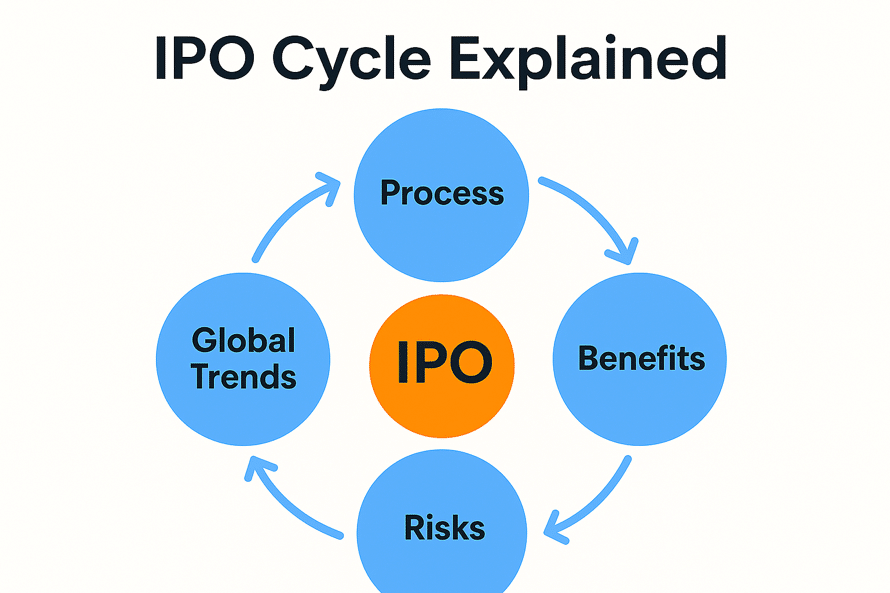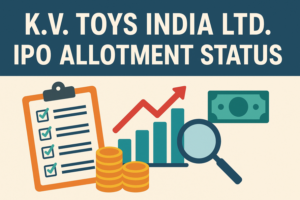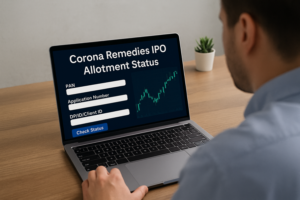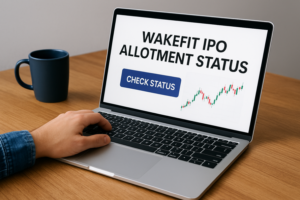
Going public is one of the most significant milestones in a company’s journey. But how exactly does an IPO work? What are the benefits and risks? And why do some years see a flood of IPOs while others go silent?
In this blog, we break down the Initial Public Offering (IPO) process, explore the dynamics behind IPO market trends, and help Indian investors understand how to make smarter decisions during IPO seasons.
What Is an IPO and Why Do Companies Go Public?
An Initial Public Offering (IPO) is when a private company offers its shares to the general public for the first time. This process turns a private business into a publicly traded one listed on a stock exchange.
Why do companies choose to go public?
- Capital Boost: IPOs raise large amounts of money, useful for expansion, R&D, or paying off debt.
- Better Branding: Being listed enhances company visibility and builds investor trust.
- Liquidity for Founders and Early Investors: Shareholders can now sell shares on the open market.
- Stock-Based Incentives: Public companies can offer ESOPs or stock purchase plans to retain top talent.
- Acquisition Currency: Public shares can be used to acquire other businesses.
But it’s not all rosy…
- Loss of Control: Founders now have to answer to public shareholders.
- Heavy Compliance: Public companies face strict regulations, audits, and disclosure requirements.
- Short-Term Pressure: Public investors expect consistent quarterly results, which can shift focus from long-term goals.
- Volatility: Share prices are impacted by market forces, not just company performance.
The Step-by-Step IPO Process
The IPO journey is long and meticulous, usually taking several months. Here’s how it unfolds:
Phase 1: Pre-IPO Preparation
- Select Underwriters: Investment banks are hired to manage the IPO.
- Due Diligence: Financials, legal records, and company structure are thoroughly vetted.
- Underwriting Agreement: A contract outlining responsibilities and risk-sharing among banks.
Phase 2: Regulatory Filings and Marketing
- File Prospectus (S-1 in US, DRHP in India): This includes all critical business, financial, and risk information.
- SEC or SEBI Review: Regulators ensure all required disclosures are made.
- Red Herring Document: A preliminary prospectus without the final share price.
- Road Show: Company leaders pitch to institutional investors to generate interest.
Phase 3: IPO Pricing and Launch
- Set Final Price and Issue Size: Based on demand and valuation.
- Listing Announcement: Shares are now open to public trading on exchanges like NSE, BSE, NYSE, or NASDAQ.
Phase 4: Post-IPO Stabilization
- Quiet Period: Underwriters stabilize prices for ~25 days.
- Lock-in Periods: Early investors cannot sell their shares for a few months, preventing immediate dumps.
Key Participants in the IPO Ecosystem
- The Issuing Company: Prepares filings and sets IPO objectives.
- Underwriters (Investment Banks): Handle pricing, marketing, and risk-sharing.
- Legal and Audit Teams: Ensure compliance and verify financials.
- Regulators (SEBI/SEC): Protect investor interests through scrutiny and rule enforcement.
- Stock Exchanges: Platforms for listing and ongoing share trading.
- Merchant Bankers, Registrars, SCSBs: Manage applications, funds, and investor allotments.
IPOs from the Investor’s Point of View
The Pros:
- Early access to high-growth companies.
- Potential for quick gains if the IPO is underpriced.
- Portfolio diversification.
The Cons:
- Volatility: Prices can swing wildly post-listing.
- Lack of track record: Newly listed companies may not have proven profitability.
- Hype-driven investments can be risky without strong fundamentals.
Tip: Always research the company’s fundamentals, read the prospectus, and avoid investing blindly on hype.
Global IPO Trends (2022-2025)
IPO markets tend to be cyclical:
Hot Markets:
- High investor appetite.
- Easy fundraising.
- Higher valuations.
Cold Markets:
- High uncertainty.
- Fewer listings.
- Conservative pricing.
2024 Highlights:
- India led global IPO volumes (327 IPOs), thanks to strong domestic demand and regulatory support.
- US saw a rebound in tech and healthcare listings.
- Asia-Pacific faced headwinds due to China’s tightening regulations.
- EMEIA emerged as the largest IPO region by proceeds.
2025 Outlook:
- More listings from AI, digital health, and defense tech sectors.
- Positive sentiment driven by easing inflation and better valuations.
- Companies need to be IPO-ready with strong governance and clear growth stories.
Key Factors That Drive IPO Success
- Company Readiness: Solid financials and internal controls.
- Timing the Market: Aligning with bullish trends can boost valuation.
- Valuation Strategy: Avoid overpricing or underpricing.
- Strong Investor Relations: Post-IPO communication matters.
- Brand Equity: Public perception can impact pricing and demand.
FAQs
What is the main purpose of an IPO?
To raise capital and give public investors a chance to buy shares.
How long does the IPO process take?
Usually 6-12 months depending on company readiness and regulatory reviews.
Can retail investors apply for IPOs in India?
Yes, through platforms like Lemonn, or directly via ASBA through your bank.
What is a Red Herring Prospectus?
A preliminary filing with most details but no final price.
What is an IPO lock-in period?
A time during which insiders can’t sell their shares post-listing, usually 90-180 days.
How is IPO pricing determined?
Pricing is based on investor demand during the roadshow, company valuation, and peer comparison.
Why do IPOs often see a “pop” on listing day?
If priced conservatively, demand outstrips supply, pushing the stock up immediately.
Are IPOs always a good investment?
Not necessarily. Some perform well, but others underperform the market. Research is key.
What happens after a company goes public?
It faces more scrutiny, needs to publish quarterly results, and builds shareholder relationships.







